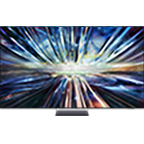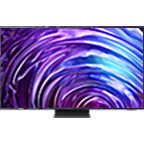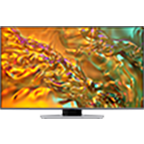* Key features may different from Key Spec.
* Images are for illustration purposes only and the accessories are sold separately.
* Features and specifications are subject to change without prior notification and may vary per country, please check in store for more details.
1. Certain features require express consent for the collection and use of personal information. Some features may require additional accessories (sold separately). Certain features, apps and services may not be available on all models and in all regions and are subject to change without notice. Internet connection required. Data, subscription or other charges may apply. Certain features are available only on free to air channels and/or require a Samsung Apps account.
2. Each speaker must be connected to a mains power supply. Wireless access to content requires a Wi-Fi network, compatible smart phone and Samsung Hub, sold separately. App must be downloaded. Data charges may apply. Usage may be subject to third party agreements. Samsung takes copyright seriously. Only share content that you own or have the right to share.
3. An NFC-enabled compatible device is required. NFC App may need to be downloaded.
4. To view in 3D, a 3D TV and 3D glasses are required.
5. Evolution Kit sold separately. It will enhance your smart features to the levels of the corresponding year of launch of your Evolution Kit. Only the software and processing hardware will be upgraded; other hardware will not be upgraded. Evolution Kit may not support certain apps and functions previously installed or available on your TV. Please check www.samsung.com for more details before purchasing the Evolution Kit. Based on currently determinable UHD connectivity, broadcasting and Blu-Ray standardization initiatives. TV panel cannot be upgraded and may differ from future standards.
6. UHD Upscaling - Performance may vary depending on source content.











